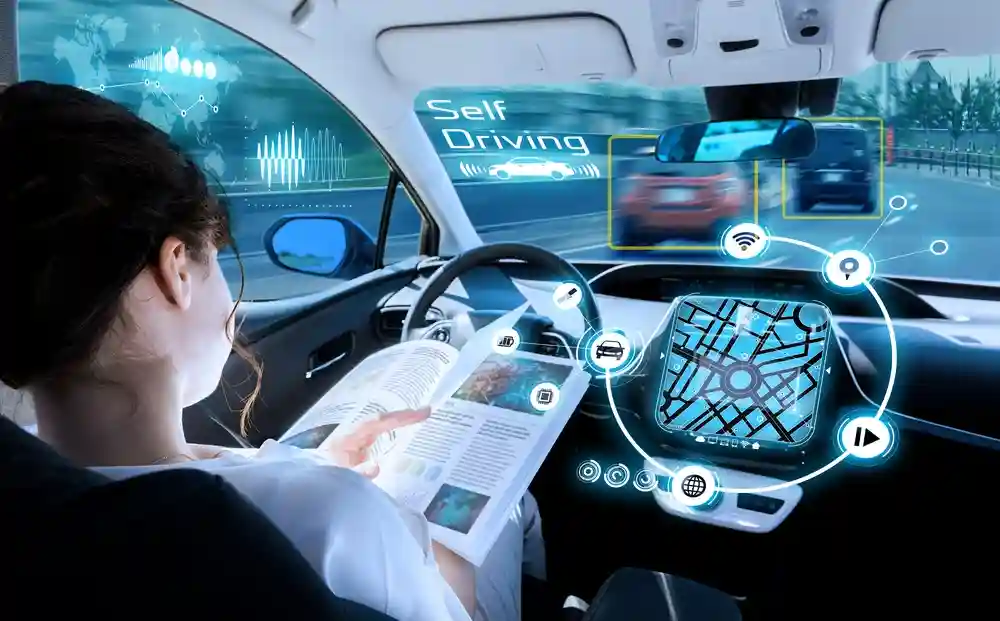Inside Self-Driving Car Tech
Mia Wilson

Photo: Inside Self-Driving Car Tech
Self-driving cars, or autonomous vehicles (AVs), have transitioned from the realm of science fiction to a rapidly evolving reality. As companies like Tesla, Waymo, and Cruise compete to perfect this technology, the world inches closer to a future where cars can navigate without human intervention. This article explores the fascinating technologies underpinning self-driving cars, how they work, and their potential implications for society.
The Building Blocks of Self-Driving Cars
Self-driving cars are built on a combination of hardware and software that work together to perceive, analyze, and respond to their environment. Key components include:
1. Sensors: Eyes of the Car
Autonomous vehicles rely on various sensors to "see" their surroundings:
- Lidar (Light Detection and Ranging): Lidar systems emit laser pulses to create high-resolution, 3D maps of the environment. These maps help the car detect obstacles, measure distances, and navigate accurately.
- Cameras: High-definition cameras capture visual data such as traffic signs, lane markings, and other vehicles. Advanced image recognition algorithms process this information.
- Radar: Radar systems use radio waves to detect objects and measure their speed. They are particularly effective in adverse weather conditions like rain or fog.
- Ultrasonic Sensors: These short-range sensors are used for parking and detecting objects close to the vehicle.
2. AI and Machine Learning: The Brain of the Car
Artificial intelligence (AI) is at the heart of self-driving technology. Machine learning algorithms process vast amounts of data to:
- Recognize patterns in road and traffic behavior.
- Predict the actions of pedestrians and other vehicles.
- Make real-time decisions to ensure safe navigation.
Neural networks, a subset of AI, simulate the human brain’s decision-making process, enabling vehicles to adapt and learn over time.
3. Mapping and Localization: Knowing the Vehicle’s Place
Self-driving cars rely on high-definition (HD) maps to understand the road’s layout. GPS technology, combined with onboard sensors, ensures precise localization. This is critical for tasks such as lane-keeping and route planning.
4. Connectivity: Communication Is Key
Vehicle-to-Everything (V2X) communication allows cars to interact with other vehicles, infrastructure, and even pedestrians. This connectivity helps AVs anticipate potential hazards and optimize traffic flow.
How Do Self-Driving Cars Work?
Autonomous vehicles operate through a multi-step process:
- Perception: Sensors collect data about the environment, including road conditions, objects, and movement patterns.
- Localization: The vehicle determines its exact position using GPS, HD maps, and sensor data.
- Planning: AI systems analyze the data to decide the best course of action, such as changing lanes, stopping at a red light, or avoiding obstacles.
- Control: The car’s control systems execute these decisions, adjusting acceleration, braking, and steering as needed.
The Levels of Autonomy
The Society of Automotive Engineers (SAE) defines six levels of vehicle autonomy, ranging from Level 0 (no automation) to Level 5 (full automation):
- Level 0: Human controls all aspects.
- Level 1: Driver assistance, such as adaptive cruise control.
- Level 2: Partial automation, where the car can control both steering and acceleration but requires human oversight.
- Level 3: Conditional automation, allowing the car to drive itself under specific conditions.
- Level 4: High automation, where the car can handle most driving tasks independently.
- Level 5: Full automation, eliminating the need for a human driver entirely.
Challenges in Autonomous Vehicle Development
Despite significant advancements, self-driving cars face numerous hurdles:
1. Safety Concerns
Ensuring the safety of passengers and pedestrians remains the top priority. Accidents involving autonomous vehicles, though rare, highlight the challenges of managing edge cases that the AI hasn’t encountered before.
2. Ethical Dilemmas
Programming a car to make ethical decisions such as choosing between two harmful outcomes is a complex challenge that raises moral questions.
3. Regulatory and Legal Barriers
Governments worldwide are grappling with creating policies that ensure safety without stifling innovation. Uniform standards for AV testing and operation are still under development.
4. High Costs
The sophisticated hardware and software required for autonomous vehicles make them expensive to produce, which could limit widespread adoption in the short term.
The Future of Self-Driving Cars
The potential benefits of autonomous vehicles are immense:
- Reduced Accidents: AVs could significantly lower accident rates by eliminating human errors such as distracted or impaired driving.
- Increased Mobility: Self-driving cars could provide mobility to individuals unable to drive, such as the elderly or disabled.
- Environmental Impact: Optimized driving patterns and reduced traffic congestion could lead to lower emissions.
However, this future also presents risks, including job displacement in industries like trucking and taxi services. Policymakers and stakeholders must address these challenges to ensure a smooth transition.
Conclusion
The technology behind self-driving cars is a marvel of modern engineering, combining cutting-edge sensors, AI, and connectivity. While there are hurdles to overcome, the promise of safer roads, greater accessibility, and environmental benefits makes the effort worthwhile. As the technology matures, society must prepare for a paradigm shift in how we view transportation. Autonomous vehicles are not just cars of the future they are a glimpse into the world of tomorrow.
For You
View AllUnderstand what public-private partnerships are and how they drive infrastructure development. Click to learn more!
Mia Wilson
Stay ahead with this essential car maintenance checklist. Keep your vehicle running smoothly and avoid costly repairs. Learn now!
Mia Wilson
Step-by-step guide to setting up your own VPS quickly and easily.
Mia Wilson
Discover free activities and attractions for budget travelers. Explore more without spending a fortune!
Mia Wilson
Understand the bond market, its role in financing, and how it impacts the economy. Click to learn more!
Mia Wilson
Learn what emerging markets are, their characteristics, and their role in the global economy. Click to explore new opportunities!
Mia Wilson
Health










Education
View All
May 14, 2025
What Is Classical Education? Explained!
Discover the principles of classical education, its history, and how it fosters critical thinking. Learn the benefits today!

April 24, 2025
What Is Distance Education? Explained!
Discover how distance education works, its benefits, and how it’s transforming learning. Start your journey today!

May 29, 2025
How Technology Has Changed Education
Discover how technology is revolutionizing education, enhancing accessibility, and transforming classrooms. Learn more now!





